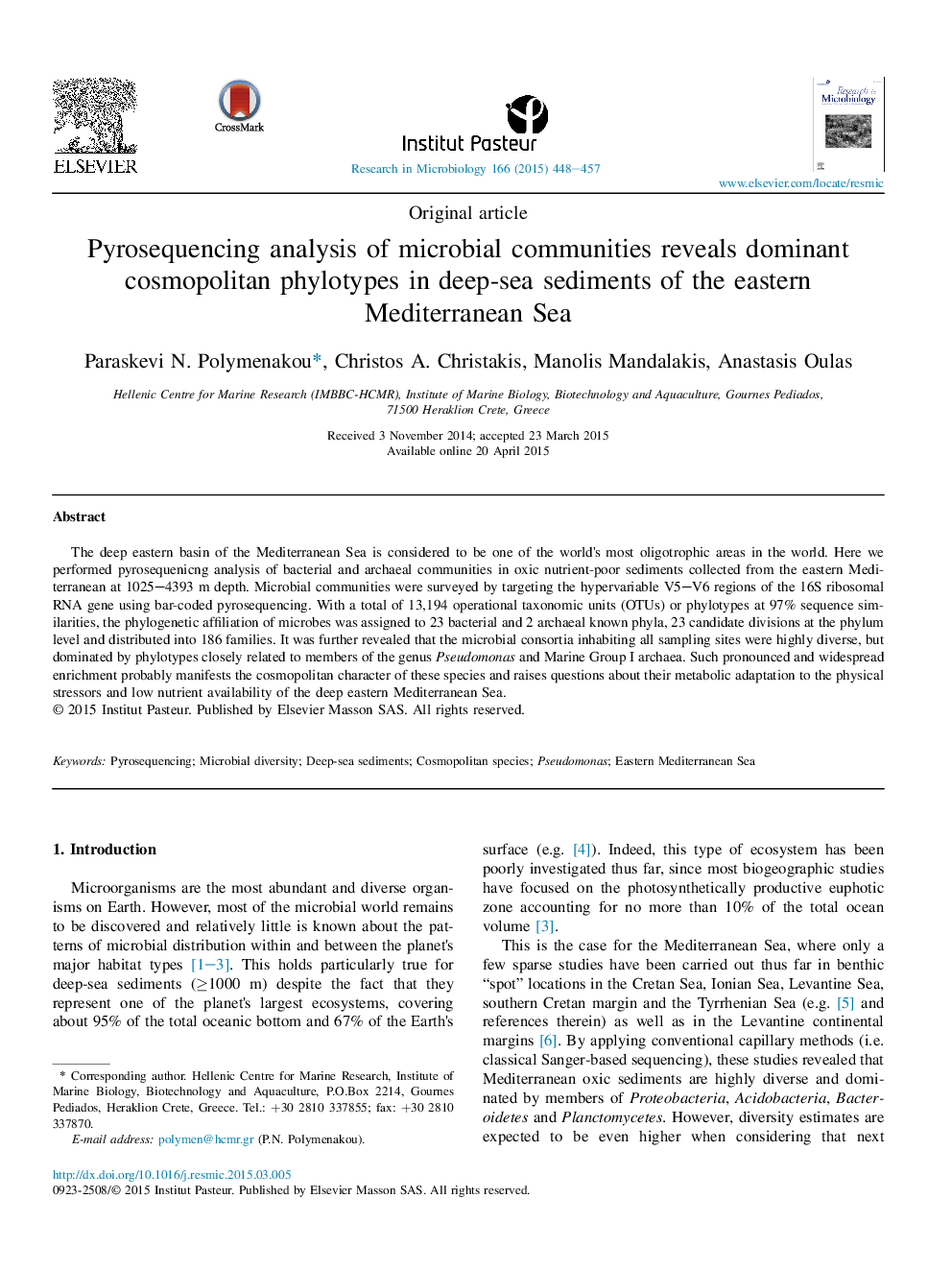| Article ID | Journal | Published Year | Pages | File Type |
|---|---|---|---|---|
| 4358430 | Research in Microbiology | 2015 | 10 Pages |
The deep eastern basin of the Mediterranean Sea is considered to be one of the world's most oligotrophic areas in the world. Here we performed pyrosequenicng analysis of bacterial and archaeal communities in oxic nutrient-poor sediments collected from the eastern Mediterranean at 1025–4393 m depth. Microbial communities were surveyed by targeting the hypervariable V5–V6 regions of the 16S ribosomal RNA gene using bar-coded pyrosequencing. With a total of 13,194 operational taxonomic units (OTUs) or phylotypes at 97% sequence similarities, the phylogenetic affiliation of microbes was assigned to 23 bacterial and 2 archaeal known phyla, 23 candidate divisions at the phylum level and distributed into 186 families. It was further revealed that the microbial consortia inhabiting all sampling sites were highly diverse, but dominated by phylotypes closely related to members of the genus Pseudomonas and Marine Group I archaea. Such pronounced and widespread enrichment probably manifests the cosmopolitan character of these species and raises questions about their metabolic adaptation to the physical stressors and low nutrient availability of the deep eastern Mediterranean Sea.
